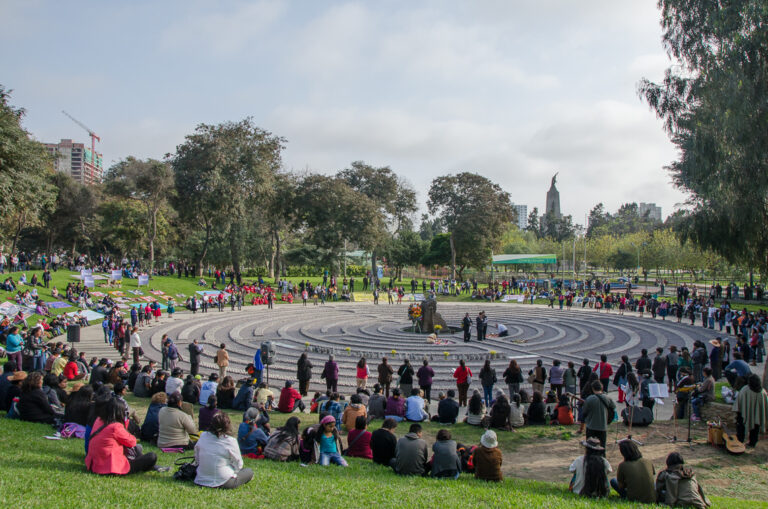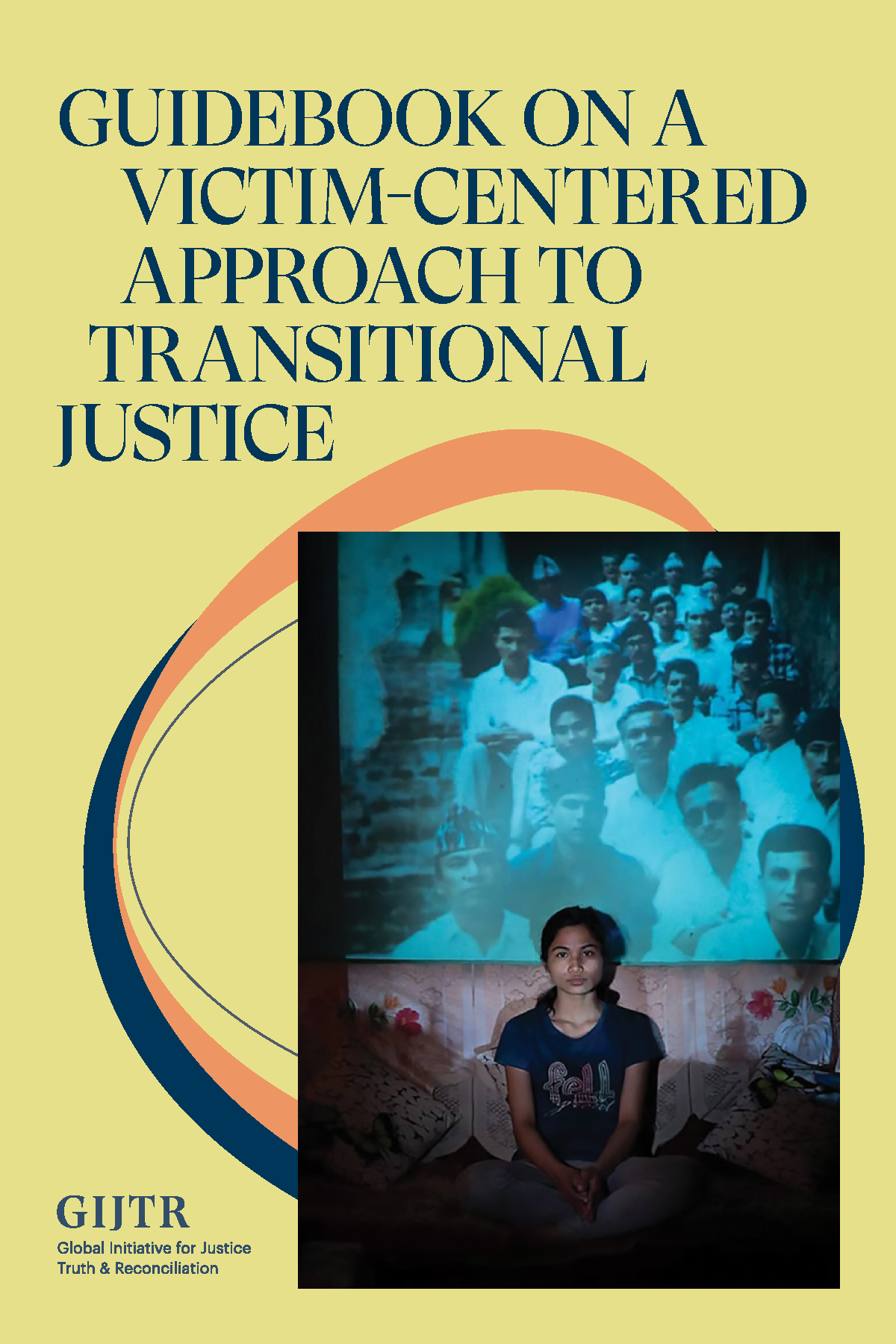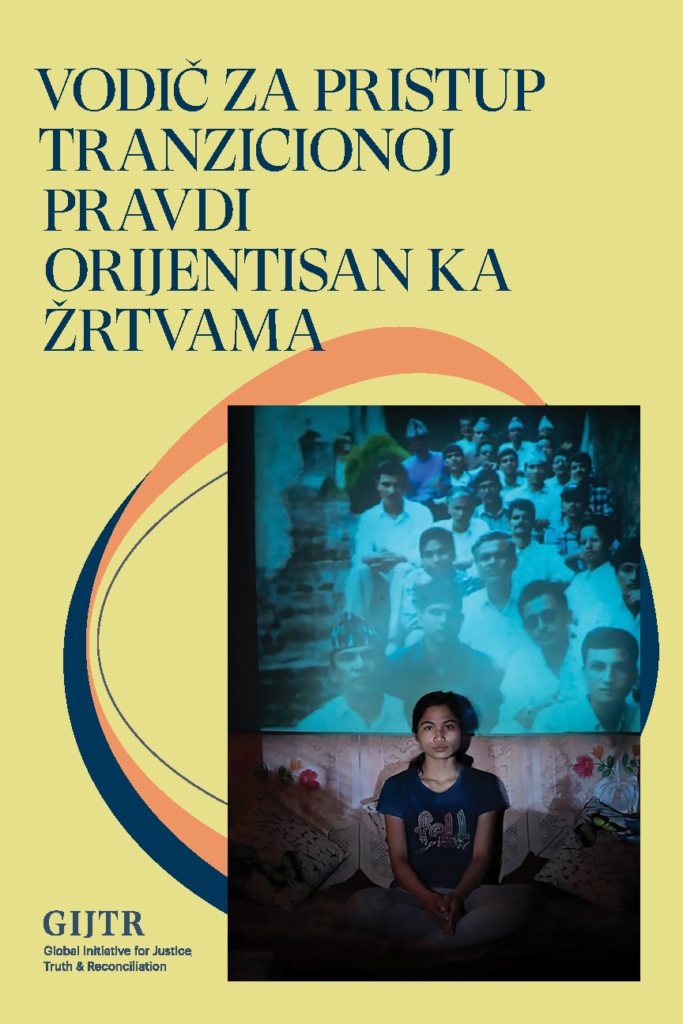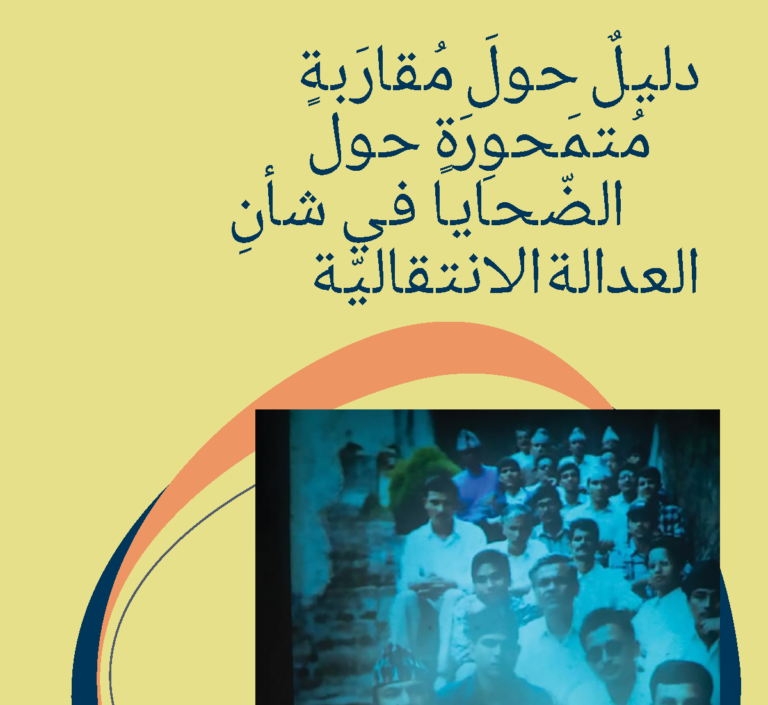Victim-Centered Approach to Transitional Justice
Following periods of violence and authoritarian rule, centering victims in transitional justice processes has the potential to begin a longer-term renewal or building of a robust civic contract between citizens and the structures of government. The implementation of these processes and mechanisms must be grounded in responding to the needs of victims, with the understanding that ownership and inclusive participation by victims is critical to the aims of societal recognition of harms and guaranteeing the non-recurrence of violations.

Context
Within international law standards, domestic courts, international tribunals, and criminal procedure codes, there is allowance for victim participation in investigations, prosecution and trial of international crimes. Similarly, victim participation is central to non-judicial processes such as truth-telling initiatives, reparation programs and commemorating victims through various memory practices. Indeed, the legitimacy of these processes depends to a large extent on the degree to which victim communities have a say in the creation of programs. In short, transitional justice processes focused on the needs and informed by victims’ choices can connect, empower and transform societies and contribute to lasting peace.
Despite this wide recognition on the importance of victim-centered approaches, the translation of this tenet into practical steps has often fallen short for a variety of reasons. On a primary level, state-led transitional justice processes may claim to be victim-centered but are inaccessible mechanisms that victims may have little knowledge of or means to participate in. On a secondary level, the identifying or naming of victims often falls within narrow confines, predetermined by formal transitional justice mechanisms that only recognize certain violations committed within a certain period. This narrowing down of victimhood is often seen as a practical step to create an operational mandate for a mechanism but in many cases ignores large groups of communities and individuals and denies any form of immediate redress or long-term recognition. In pointing out the limited and static idea of victims and their needs, it is clear that the very concept and practice of centering victims cannot be understood as a singular methodology or one-dimensional principle. The failures of formal processes to translate the rhetoric of victim-centeredness into adequate and inclusive participation and representation of victims is a void that civil society actors and victims’ associations have often worked to address.
Project Details
Based on the Consortium’s experience and building on successes from its previous projects with victim communities, the GIJTR implemented a twelve-month project, Victim-Centered Approach to Transitional Justice, to address the need for a holistic representation of victims in transitional justice processes. This project is designed to aid civil society actors who directly work with victims in transitional justice contexts by providing trainings to further their current skills and an exchange to learn and connect with CSOs working in different contexts. The ultimate objective of the project is to produce a comprehensive Guidebook that will highlight practical examples and best practices collected from victims’ associations, CSOs and the Consortium’s vast expertise.

Guidebook on a Victim-centered Approach to Transitional Justice
This Guidebook seeks to address the role of victims in transitional justice and how victims can participate, with a special focus on the psychosocial components of victim involvement, as well as benefits and challenges. It highlights practical examples and best practices collected from victims’ associations, CSOs, and the GIJTR’s vast expertise.


Participants and fellow practitioners from six different contexts partnered with GIJTR to document their own experiences in working with victims and the experiences of victims who have advocated for support and recognition in various transitional justice processes.
Albania
This case study is available in English and Albanian.
Egypt
This case study is available in English and Arabic.
The Gambia
This case study is available in English.
The Gambia II
This case study is available in English.
Iraq
This case study is available in English and Arabic.
Nepal
This case study is available in English and Nepali
Yemen
